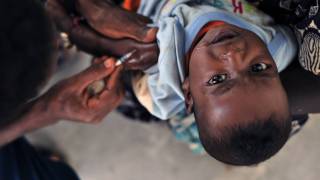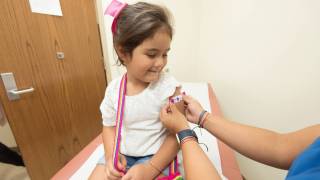Childhood Vaccines Are Profoundly Effective

Over the last few decades, scientific advances have increased the availability of innovative vaccines for once-fatal illnesses. And public health investments in vaccines have resulted in high coverage for most routine childhood vaccines.
In the new issue of Pediatrics, published by the American Academy of Pediatrics on August 22, 2022, Talbird et al. reported significant estimates of reduced vaccine-preventable disease in the United States.
The authors analyzed various historical records and current public health data systems. They found greater than a 90% reduction in the incidence of ten illnesses after the introduction of vaccines: diphtheria, Haemophilus influenzae type b, measles, mumps, pertussis, polio, rotavirus, rubella, tetanus, and varicella.
An estimated 24 million cases of vaccine-preventable diseases were averted based on 2019 U.S. population estimates, with the most significant reductions seen in influenza, measles, mumps, rubella, pertussis, varicella, and acute otitis media caused by Streptococcus pneumonia.
Despite these profound benefits, the past successes of vaccination efforts in the U.S. are not guaranteed to persist into the future.
Talbird et al. noted, "With sustained vaccine coverage at levels >80% for most pediatric vaccines…many vaccine-preventable diseases are now controlled as a public health problem or eliminated in the United States."
The authors note the fragility of this accomplishment, citing that under-vaccination recently resulted in measles outbreaks in the U.S.
The National Immunization Survey–Child noted that, among school-aged children, the percentage of children who had received all required vaccines in the 2020–2021 school year fell by approximately one percentage point to 94% in one year.
And the percentage of kindergartners with an exemption for one or more school vaccines has increased from 1.6% (2011–2012) to 2.2% (2020–2021), with most of the increase because of nonmedical (versus medical) exemptions.
The World Health Organization has now listed vaccine hesitancy as #1 of the top ten threats to global health.
However, pediatricians have been aware of and fighting against misinformation for decades.
As noted in the 2021 Surgeon General's Advisory on Confronting Health Misinformation, pediatricians play an important role as trusted messengers for parents and can help dispel vaccine misinformation.
'A concerted effort across all parts of the health care and public health systems can assure that vaccines remain one of the greatest public health achievements of our time,' concluded this report.
Furthermore, as the U.S. confronts the 2022-2023 influenza season, trust in flu shots is essential to reducing respiratory disease.
The U.S. CDC published updated vaccination schedules in February 2022, which suggest most people over six months of age receive an annual flu shot.
As of mid-August, flu vaccinations became available at local clinics and pharmacies.
PrecisionVaccinations publishes fact-checked, research-based vaccine news curated for mobile readership.
Our Trust Standards: Medical Advisory Committee
























